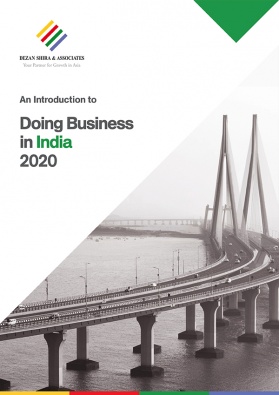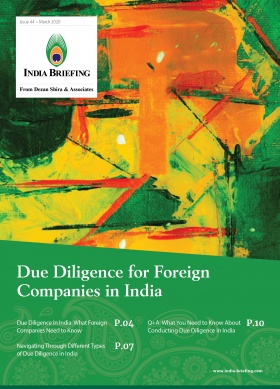India at the Crossroads: The Free Trade Options After Rejecting RCEP
Op/Ed by Chris Devonshire-Ellis
The Regional Comprehensive Economic Partnership (RCEP) free trade agreement was signed off by the ASEAN countries, Australia, China, Japan, New Zealand and South Korea – without India, who for several years had been involved in negotiations, but opted to pull out a year ago. RCEP has subsequently gone ahead without India’s participation, although the RCEP members did state they would ‘leave the door open’ for future participation.
But why did India pull out of RCEP, and what are its alternatives?
Local protectionism
The business lobby in India is politically powerful, while at the same time conservative veering towards protectionism. While foreign investment is welcomed, India does make it difficult for international companies to compete; even after establishment there are barriers to trade. I know this from having established Dezan Shira & Associates in India back in 2008; as a professional services firm, we are restricted in what we can and cannot do, affecting the rate of our growth through various restrictive legislations that we did not encounter in China. This dead hand of restrictive practices is designed to protect Indian domestic interests. Yet, longer term it is damaging, both in professional services and manufacturing. Quality standards decline and fail to keep up to global norms. Innovation is suppressed, and consumer prices can be unnecessarily high. In this regard, India has a different attitude to China as it looks to progress. 30 years ago, China welcomed foreign investment as it had little meaningful domestic expertise. That technology transfer and introduction of international investment and skill sets helped Chinese businesses develop, learn, expand, and grow. Now China has a vast array of some of the world’s most influential, globally active, and profitable companies. The Indian business and political mindset are different, and is often related to obfuscation, obstruction, and access denial. India pulled out of RCEP because it did not want China, especially, to gain access to its local markets. Indian corporates fear Chinese competition, and frankly they have every right too. China is far better disciplined, savvy and with better technologies and skill sets than India. The Indian corporate strategy to deal with this is to close the door. A better strategy might be to arrange partnerships.
ASEAN, APTA, BIMTEC, and SAFTA
The RCEP agreement includes ASEAN – which India already has a free trade agreement with. India is also a member of the Asia-Pacific Trade Agreement (APTA), which also includes Bangladesh, China, Laos Mongolia, South Korea, and Sri Lanka. Then there is The Bay of Bengal Initiative for Multi-Sectoral Technical and Economic Cooperation (BIMSTEC), which includes Bangladesh, Bhutan, India, Myanmar, Nepal, Sri Lanka, and Thailand. (Thailand has an FTA with India and also coordinates maritime and port connections and developments.)
The South Asia Free Trade Agreement (SAFTA) includes Afghanistan, Bangladesh, Bhutan, India, Maldives, Nepal, Pakistan, and Sri Lanka, which was launched under the auspices of the South Asian Association for Regional Cooperation (SAARC).
India also has an FTA with Japan, New Zealand, and South Korea. The country loves signing up to deals such as these and takes great pride in these trade clubs. In practice, what tends to happen is that agreements over which products should be traded at reduced tariffs are put in place and categorized, and they spend most of their official time arguing about what was actually meant. India is far too good at subverting the British legal system they inherited from the Raj and using ‘democracy’ as a means to show they can be fair and reasonable and sign off agreements while immediately afterwards – and quite deliberately – preventing them from happening. The status quo remains the Indian modus operandi.
India and Mercosur
India has a preferential trade agreement (PTA) with Mercosur, the South American trade bloc that includes Argentina, Brazil, Paraguay, and Uruguay. This means that the two sides have identified specific products that are subject to tariff reductions. Under the existing terms of the latest, 2017 PTA, India brought down import duties on 452 items, ranging from 10 to 100 percent.
These include meat products, chemicals, raw hides and skins, leather articles, wool, cotton yarn, glass and glassware, iron and steel, machinery and equipment, optical, photographic, and cinematographic apparatus. India has secured preferential access in Mercosur for organic chemicals, pharmaceuticals, essential oils, plastics and articles, rubber and rubber products, tools and implements, machinery items, as well as electrical machinery and equipment, and has indicated that it wants to expand PTA coverage to up to 2,500 tariff lines. The point about Mercosur is that corporate India can pick and choose what it wants – South American companies are not going to be investing in India and competing with them on their own market in any great numbers.
India and The Eurasian Economic Union
India is currently negotiating a free trade agreement with the Eurasian Economic Union, which includes Armenia, Belarus, Kazakhstan, Kyrgyzstan, and Russia. This geographic bloc sits between the EU to the West and China to the East, and has a combined market of 183 million people. India and Russia are becoming closer as trade partners; India buys military equipment and gas from Russia, and is a major purchaser of diamonds for its jewelry industry. The EAEU also helps offer additional routes: India is a major investor in the Iranian Port of Chabahar, and partners with Russian railways on rail transportation north and northeast along the International North-South Transportation Corridor (INSTC), a route for Indian manufacturers to access Afghanistan, the Caucasus, Russia, and potentially markets in the EU. There is also talk of a Russian Free Trade Zone being established in Gujarat, which will offer Russian manufacturers the ability to utilize Indian labor for export manufacturing purposes, and especially in the automotive industry. Again, this suits the Indian corporate establishment just fine – EAEU and Russian businesses are unlikely to come to India to compete in the Indian domestic market to any large degree.
India in danger of losing out to Africa
India is now at a point where it needs to choose between models and its future direction. This is because it is inheriting China’s worker demographic bonus – as China’s workers age, and become more expensive, India is sitting on a treasure trove of some 500 million low cost workers. It ought to become the workshop of the world – yet local protectionism is inhibiting this potential. India does not have long to address this static inertia. Across the Indian Ocean lies Africa, whose own African Continental Free Trade Agreement is shortly to kick in and reduces intra-African tariffs to zero on 95 percent of all traded products. Africa is a continent, and its respective countries specialize in a diverse range of industries. Africa is also relatively close to Southeast Asia and the Middle East. Free trade zones are springing up all over the African coastlines, and in the interior, offer global manufacturers the ability to source in Asia, Africa, and the Middle East and finish products for export. This is already happening, and means that India is in danger of losing its worker age demographic. If India does not correct this situation and start to open its markets, it runs the risk of ultimately descending into a second rate manufacturing and technological nation, permanently incapable of realizing its potential.
The foreign investment perspective
As can be seen, Indian free trade is a complex and currently moving subject. India prefers agreements it can either subvert (such as much of the South Asia FTA) to its advantage or keep competition at arm’s length (such as Mercosur and the EAEU). To this end, a deal with RCEP and the China threat has proven too much. This means that expanding the Mercosur product range and signing an FTA with the EAEU are more likely than an RCEP deal – India has already successfully divided and conquered it with separate agreements with many of the RCEP member states anyway. But there are dangers ahead. The perceived China threat could also mean that India misses out on the China consumer market, set to reach 550 million middle class consumers by 2025 – while at the same time remain insufficiently motivated to compete. Africa could step into India’s shoes as a global manufacturing base, and India might miss out on exploiting its latent available workforce. That same workforce demographic is how China propelled itself to be a world power, a status India would love to have. But by denying RCEP, corporate India for now, at least, has shown itself unwilling to take on the challenges of change. Fear, rather than opportunity, rule Indian boardrooms and the families behind many of them. There is a crossroad here, and Mercosur and the EAEU, despite being useful, may not be enough to lift the country to where it should be. 500 million people missing an opportunity may well come back to haunt the politicians of the future if Indian corporates deny them the ability to work – regardless of the nationality of their employer.
Related Reading
About Us
India Briefing is produced by Dezan Shira & Associates. The firm assists foreign investors throughout Asia from offices across the world, including in Delhi and Mumbai. Readers may write to india@dezshira.com for business support in India.
- Previous Article Relocating Your Business Operations to India: A Guide for US Investors
- Next Article India, Italy Partnership to Focus on Advanced Manufacturing of Railways and the Agro-Industry







